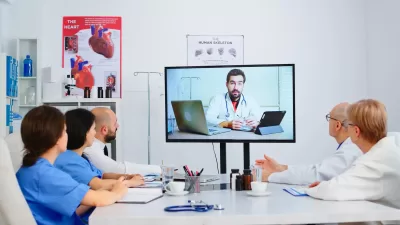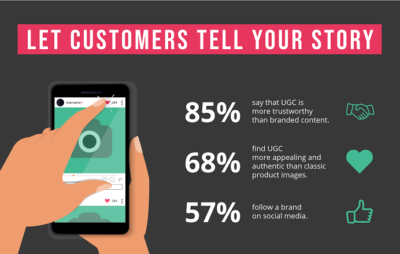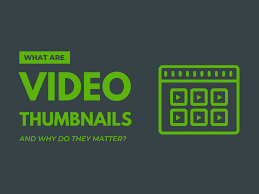With the rise of video platforms like YouTube and social media, the internet is giving us more and more opportunities to reach and engage with others. This makes video marketing content a more powerful tool for educating, informing, and building relationships with patients and your community.
As a healthcare company, you can look at the different video marketing trends in healthcare and apply them to your marketing strategy to help you meet your marketing goals.

In this article, we’ll explore the latest video marketing trends in healthcare that you need to know about. We’ll discuss how video marketing can help you humanize your brand, simplify complex information, and increase patient engagement.
We’ll also examine the impact of artificial intelligence (AI) and machine learning on video marketing trends in healthcare and how you can leverage this technology to create more personalized and engaging content. By the end of this article, you’ll have a solid understanding of how video marketing can help you grow your healthcare brand and connect with your patients.
Emerging Technologies in Video Marketing
As video marketing continues to gain popularity in the healthcare industry, emerging technologies are playing a crucial role in enhancing the overall video experience for the audience. In this section, we will discuss some of the top emerging technologies in video marketing for healthcare.
Artificial Intelligence and Machine Learning
Image Source
Artificial intelligence (AI) and machine learning (ML) have revolutionized the video marketing industry by enabling healthcare providers to create highly personalized and engaging content. AI and ML can analyze large data sets to understand patient preferences and create tailored recommendations.
AI can analyze patient data and create and automate certain aspects of video production. This will help improve efficiency and reduce costs for healthcare providers. For instance, AI-powered chatbots can be used to engage with patients and provide them with personalized information based on their preferences.
Virtual Reality and Augmented Reality as Video Marketing trends in healthcare

Virtual reality (VR) and augmented reality (AR) have the potential to revolutionize the healthcare industry by providing patients with immersive experiences that can help them better understand complex medical procedures.
For instance, VR can be used to simulate surgical procedures, while AR can be used to overlay digital information on real-world objects. These technologies can also be used to train medical professionals and provide them with hands-on experience in a safe and controlled environment.
360-Degree Videos in healthcare video marketing

360-degree videos provide a fully immersive experience to the audience by allowing them to explore the video from any angle. In the healthcare industry, 360-degree videos can be used to provide patients with a virtual tour of medical facilities or showcase medical procedures from different angles. This technology can also give medical professionals a more comprehensive view of complex medical procedures.
Content Strategies for Healthcare Video Marketing

If you’re looking to create a video marketing strategy for your healthcare organization, you’ll need to consider the types of content that will resonate with your audience. Here are some content strategies to consider:
Educational Content

Educational content is a great way to establish your organization as a thought leader in your industry. You can create videos that explain complex medical procedures, provide tips for managing chronic conditions, or offer advice on healthy living. By providing valuable information to your audience, you can build trust and credibility with potential patients.
To create effective educational content, you should focus on providing accurate and easy-to-understand information. Use visuals, such as diagrams or animations, to help explain complex concepts. You can also include interviews with medical experts to add credibility to your content.
Patient Testimonials

Patient testimonials are a powerful way to showcase your organization’s impact on people’s lives. By featuring real patients sharing their stories, you can help potential patients feel more comfortable and confident about choosing your organization.
When creating patient testimonial videos, it’s important to choose patients who are comfortable sharing their stories on camera. You should also focus on highlighting the specific ways your organization helped them, such as by providing personalized care or offering innovative treatments.
Live Streaming Events as a Video Marketing trend for Healthcare

Live streaming events can be a great way to engage with your audience in real time. You can use live streaming to broadcast events such as health fairs, educational seminars, or Q&A sessions with medical experts.
To create effective live-streaming events, you should promote them in advance to build anticipation. You can also encourage viewers to ask questions or provide feedback during the event to increase engagement. Finally, ensure you have a reliable internet connection and a high-quality camera to ensure the stream is clear and easy to watch.
Live video streaming is becoming more popular in healthcare, particularly for events such as webinars, conferences, and seminars. This video content allows healthcare providers to connect with a wider audience in real-time and can help increase engagement and participation.
Platform-Specific Video Marketing

When it comes to video marketing for healthcare, it’s important to consider the different platforms available and optimize your content accordingly. Here are three key areas to focus on:
YouTube Optimization
YouTube is the second largest search engine in the world, making it a prime platform for healthcare providers to share educational content and build their brand. To optimize your videos for YouTube, consider the following:
- Use relevant keywords in your video title, description, and tags to help users find your content.
- Create eye-catching thumbnails that accurately represent your video.
- Include a call-to-action (CTA) at the end of your video, encouraging viewers to subscribe to your channel or visit your website.
Social Media Integration
Social media platforms like Facebook, Instagram, and Twitter offer a great opportunity to reach a wider audience and engage with your community. To make the most of social media for video marketing, consider the following:
- Create short, attention-grabbing videos that are optimized for each platform’s specific format and audience.
- Use hashtags and relevant keywords to increase your reach and visibility.
- Encourage engagement by asking questions, responding to comments, and sharing user-generated content.
Healthcare Webinars

Webinars are a great way to provide in-depth education and build trust with your audience. To create effective healthcare webinars, consider the following:
- Choose a relevant topic and provide actionable insights that your audience can use.
- Promote your webinar through email marketing, social media, and other channels.
- Follow up with attendees after the webinar with additional resources and opportunities to engage with your brand.
By optimizing your video content for each platform and providing valuable information to your audience, you can build a strong online presence and establish your brand as a trusted authority in the healthcare industry.
Mobile Video Marketing Trends

As mobile devices become more ubiquitous, it’s no surprise that mobile video marketing has become increasingly popular in the healthcare industry. In fact, according to LocaliQ, mobile video consumption is expected to grow by 9% in 2024. Here are two mobile video marketing trends that you should pay attention to:
Vertical Video Formats
Vertical videos are becoming more popular because they are optimized for mobile devices. According to Cardinal Digital Marketing, vertical video formats are more engaging than horizontal ones because they take up more screen space and are easier to watch on mobile devices. In fact, Instagram and Snapchat have already embraced vertical video formats, and other social media platforms are following suit.
Short-Form Video Content
Short-form video content is becoming more popular because it’s easier to consume on mobile devices. According to Smart Insights, short-form videos (30 seconds or less) are becoming more popular because they are more likely to be watched to completion. This is because people have shorter attention spans when they are using their mobile devices. Short-form videos are also easier to share on social media platforms, which makes them a great way to reach a wider audience.
Video SEO for Healthcare

Video content is becoming increasingly popular in healthcare marketing, and optimizing your videos for search engines can help you reach a wider audience. Video SEO involves optimizing your videos to rank higher in search engine results pages (SERPs) and increase visibility. Here are some tips for video SEO for healthcare:
Keyword Research for Video
Keyword research is the process of identifying the words and phrases that people use to search for content related to your video. Conducting keyword research can help you understand your audience and create content that meets their needs. Use tools like Google Keyword Planner or Ahrefs to find relevant keywords for your video.
When creating video content, use your target keywords in the title, description, and tags. This will help search engines understand what your video is about and rank it higher in search results.
Video Thumbnails and Titles

Video thumbnails and titles are the first things viewers see when they search for content on YouTube or other video platforms. They play a crucial role in attracting viewers and encouraging them to click on your video.
When creating video thumbnails, use high-quality images that accurately represent the content of your video. Avoid using misleading images or clickbait titles that don’t accurately reflect the content of your video. This can lead to a high bounce rate and hurt your video’s ranking in search results.
In addition to using target keywords in your video titles, make sure your titles are descriptive and accurately reflect the content of your video. This will help viewers understand your video and encourage them to click on it.
By optimizing your videos for search engines, you can increase visibility and reach a wider audience. Use keyword research to identify relevant keywords and use them in your video titles, descriptions, and tags. Use high-quality images for your video thumbnails, and avoid using clickbait titles that misrepresent the content of your video.
Compliance and Regulations
When it comes to video marketing in healthcare, compliance and regulations are of utmost importance. Healthcare organizations must follow all the necessary regulations and guidelines to protect patient privacy and security. In this section, we will explore some of the compliance and regulatory considerations you need to consider when creating video marketing content for healthcare.
HIPAA Considerations

The Health Insurance Portability and Accountability Act (HIPAA) sets the standard for protecting sensitive patient data. If you are creating video content that includes patient information, it is essential to ensure that you follow HIPAA guidelines. This includes obtaining written consent from patients to use their information in your video content and ensuring that the video is only accessible to authorized personnel.
To ensure HIPAA compliance, consider using a secure video hosting platform with end-to-end encryption. You should also implement access controls to ensure only authorized personnel can view the video content.
Patient Privacy
Patient privacy is a critical consideration when creating healthcare video marketing content. You must ensure that any patient information in your video is de-identified and patients’ privacy is protected. This includes ensuring that any identifiable information, such as names, addresses, or medical record numbers, is removed from the video content.
Measuring Video Marketing Success

To determine the success of your healthcare video marketing campaign, you need to track engagement metrics and conversion rates.
Engagement Metrics

Engagement metrics measure how your audience interacts with your video content. These metrics include views, likes, shares, comments, and click-through rates.
Views: The number of times your video has been watched. This metric is a good indicator of your video’s reach.
Likes: The number of people who have clicked the “like” button on your video. This metric shows how well your video resonates with your audience.
Shares: The number of times your video has been shared on social media platforms. This metric shows how much your audience values your content and how likely they are to recommend it to others.
Comments: The number of comments left on your video. This metric shows how engaged your audience is with your content and can provide valuable feedback.
Click-through rates are the number of people who click on a link in your video. This metric shows how effectively your video drives traffic to your website or landing page.
In conclusion, video marketing is a hot trend right now, transforming the healthcare industry and its marketing strategies. Personalized patient testimonials resonate deeply with potential clients by providing patients with personalized and relatable experiences.

